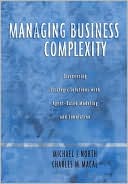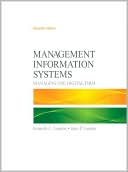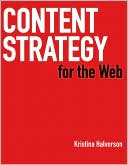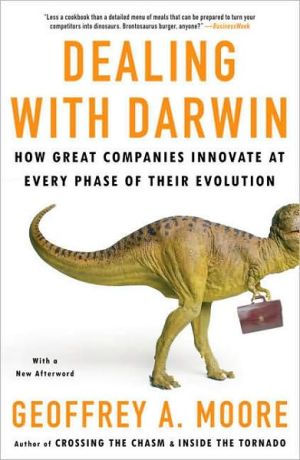Managing Business Complexity: Discovering Strategic Solutions with Agent-Based Modeling and Stimulation
Search in google:
Agent-based modeling and simulation (ABMS), a way to simulate a large number of choices by individual actors, is one of the most exciting practical developments in business modeling since the invention of relational databases. It represents a new way to understand data and generate information that has never been available before—a way for businesses to view the future and to understand and anticipate the likely effects of their decisions on their markets and industries. It thus promises to have far-reaching effects on the way that businesses in many areas use computers to support practical decision-making.Managing Business Complexity is the first complete business-oriented agent-based modeling and simulation resource. It has three purposes: first, to teach readers how to think about ABMS, that is, about agents and their interactions; second, to teach readers how to explain the features and advantages of ABMS to other people and third, to teach readers how to actually implement ABMS by building agent-based simulations. It is intended to be a complete ABMS resource, accessible to readers who haven't had any previous experience in building agent-based simulations, or any other kinds of models, for that matter. It is also a collection of ABMS business applications resources, all assembled in one place for the first time. In short, Managing Business Complexity addresses who needs ABMS and why, where and when ABMS can be applied to the everyday business problems that surround us, and how specifically to build these powerful agent-based models.
The Challenge 3Why This Book? 3The Who, What, Where, When. Why, and How of Agents 3Why Agent-Based Modeling and Simulation Is Needed Now 4The Foundation of ABMS 5Why ABMS Is Useful, Usable, and Used 6How ABMS Works: An Overview 8Incremental Discovery, Design, and Development 8How This Book Is Organized 8Case Studies 9Note 9References 9The ABMS Paradigm 11Parts Make the Whole 11The Two Fundamental Types of Models 11Nondeterminism 13The Cycle of Innovation 14Other Angles on Nondeterminism 16Choosing Behaviors to Model 17The Spectrum of Model Uses 18Discovering That the Whole Is Greater Than the Parts 22Summary 22Note 23References 23Agents Up Close 24Agents: An Overview 24Agent Attributes 24Agent Behaviors 27Simple Agents or Proto-Agents 27ComplexAgents 31A Market Example 41Discover, Design, and Develop 43Notes 43References 43The Roots of ABMS 45ABMS in Context 45Historical Roots 45Complexity Science 46The Diffusion of ABMS 55Plectics Redux 56References 56The Role of ABMS 59The Big Picture of Modeling and Simulation for Business Applications 60A Supply Chain Example 63A Survey of Modeling Approaches 66When to Use Agents? 93Blended Modeling Approaches 93Summary 94Note 95References 95Discovering Agents and Agent Behaviors 97Agents Are What They Do 97Social Agents 97Examples of Behavioral Theories 97Agent Diversity 101Other Agents 101Multi-Agent Systems 101Artificial Intelligence 102Discovering Agents 102Discovering Agent Behaviors 102A Market Example 112Acting Up 114References 114Office ABMS 116Progressive Development 116Prototyping 116ABMS Environments 117The Four Model Growth Paths 117Leveraging Change 118Returning to the Questions 121Office ABMS Architectures 122The Office ABMS Continuum 123Examples 126Back at the Office 128Notes 128References 128How to Do Desktop ABMS 130ABMS on the Desktop 130Agent Spreadsheets 130Dedicated ABMS Prototyping Environments 161A Market Example 171Summary 182Notes 182References 182How to Do Participatory ABMS 183Live and In Person! 183The Start of It All 183Strengths and Weaknesses 184Developing Strong Minds 186Turning Over Rocks 187Details, Details, Details, 187A Market Example 190Summary 194Note 194References 194How to Do Large-Scale ABMS 195From Desktops on Up 195Features Galore! 195Current Toolkits 206The Large-Scale Modeling Life Cycle 209Designing Large-Scale Models for Use 210Agent Patterns and Antipatterns 215Examples 217Summary 219Notes 219References 219ABMS Verification and Validation 221V&V Overview 221Verification 222Validation 226Related Aspects of V&V 231Summary 233References 233A Visual Approach to Data Collection and Cleaning 235Tasty Morsels 235The Fact Food Pyramid 235A Model Diet 239Marshmallows and Campfire Stories 239Cooking Times Vary 240Data Quality 241A Recipe for Success 248Dinner Is Served 253A Market Example 258Summary 259References 260Understanding and Presenting ABMS Results 261Analyzing ABMS Results 261Presenting ABMS Results 278Seven Steps 282Notes 282References 282ABMS Project Management 283The ABMS Business Function 283The Fundamentals 283Project Goals 284Stopping Mission Creep 284Champions 285The Domain Skills Pyramid 285ABMS Project Structures 286The ABMS Business Process 292Growing Up 296References 297Rising to the Challenge 298The Who, What, Where, When, Why, and How of Agents 298Useful, Usable, and Used 299Index 303








